January 30, 2009
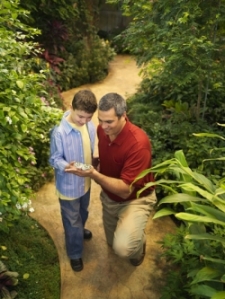 A new National Study, published January 14th, indicates that informal science activities, such as trips to museums and zoos, viewing of television shows, and even discussions between parents and children, have the power to improve students’ learning.
A new National Study, published January 14th, indicates that informal science activities, such as trips to museums and zoos, viewing of television shows, and even discussions between parents and children, have the power to improve students’ learning.
Education Weekly reports that while it is difficult to assess informal learning, findings have shown that these out-of-school activities foster excitement in students. Not only are students becoming more excited about the curriculum, but the informal interactions seem to do a good job at reaching out to students from different backgrounds.
Looking to motivate your students? Upon discovering the positive outcomes of informal experiences, researchers have identified why these programs seem to draw kids in. Here’s what they found:
Informal learning experiences…
- draw on learners’ experience and knowledge
- use everyday language
- refer to common cultural experiences
- use familiar tools
Your own house may be the perfect starting point for informal learning. Children can find plenty of games, simulations, and information on the internet to answer their questions, and promote further learning. Check out the RAC-CEMS “Fun Stuff” page to get started today!
 2 Comments |
2 Comments |  Community, Finger Lakes STEM Hub, Parent Resources, Research | Tagged: Education Weekly, fostering excitement, Games, informal education, learning, museum education, zoo |
Community, Finger Lakes STEM Hub, Parent Resources, Research | Tagged: Education Weekly, fostering excitement, Games, informal education, learning, museum education, zoo |  Permalink
Permalink
 Posted by aschlag9
Posted by aschlag9
January 28, 2009

Yes, stars grow by “eating” the gas and dust around it. It was thought that there was a limit as to the size to which a star could grow but it has been found that this is not true. The logic behind this is that when the star grew large enough and ignited it blew away the gas and dust around it and reached its maximum size. The study found that after the star’s ignition there’s still gas and dust for it to feed on continuously. Not only do they “eat” gas and dust but also if they’re big enough then their gravity pulls smaller stars towards it and absorbs them. This makes them even bigger.
To find out more check out the ScienceNOW article by Phil Berardelli.
 Leave a Comment » |
Leave a Comment » |  Science, Teacher Resources | Tagged: dust, eat, gas, grow, ignition, stars |
Science, Teacher Resources | Tagged: dust, eat, gas, grow, ignition, stars |  Permalink
Permalink
 Posted by jaschiram
Posted by jaschiram
January 26, 2009
There are currently some astronomy opportunities at the Rochester Museum & Science Center that are out of this world:
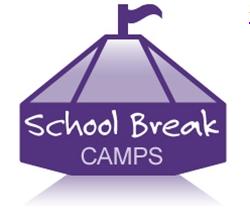
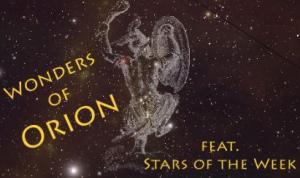
- The Strasenburgh Planetarium is currently featuring a star show series entitled, “The Wonders of Orion“. Each week a new star is featured under the big dome, including star clusters and nebulas that Hubble and other telescopes have found in Orion’s neighborhood. Each show includes a point-out of stars, constellations and planets you can see in the current night sky.Check the Planetarium’s website for a list of showtimes.
- The museum’s Education department is offering an entire week of Space-based activities for students ages 6-11. The camp takes place during the week of February break (February 16-20). Visit the museum’s website for more information about this break camp.
 Leave a Comment » |
Leave a Comment » |  Community, Science, Student Resources | Tagged: Astronomy, camps, Orion, RMSC, Spring Break |
Community, Science, Student Resources | Tagged: Astronomy, camps, Orion, RMSC, Spring Break |  Permalink
Permalink
 Posted by aschlag9
Posted by aschlag9
January 23, 2009

The island of Macquarie, which is south of Australia and administered by the Australian state of Tasmania, is facing major “environmental devastation” caused by the removal of feral cats from the island. The island is a UNESCO Biosphere Reserve, a World Heritage Reserve, and a Tasmanian State Nature Reserve. It has all these classifications to give it the maximum protection possible. Regardless, species that are not native to the island are killing the native plants and animals.
Cats were killing tens of thousands of native seabirds, some of which are classified as threatened. In a project to stop the birds from becoming extinct, cats were eradicated from the island after several decades of attempts. Now the rabbit and rodent non-native populations, which were being kept in check by the cats, have exploded. Rabbits are destroying the vegetation and the rats and mice are eating the seedlings, bird’s eggs and fledglings.
This is what happens when you meddle with the ecosystem, even with the best of intentions, without thinking long and hard, says the article. “The lessons for conservation agencies globally is that interventions should be comprehensive, and include risk assessments to explicitly consider and plan for indirect effects, or face substantial subsequent costs.”
Rabbits, rats and mice will start to get eradicated in 2010 to help the island and it’s native plant and bird species recover from the invasion that has lasted about a century. For more details go the the January 13, 2009 article by Michael Casey and the Sydney Morning Herald April 12, 2007 article.
This can be used when teaching the balance of an ecosystem in Intermediate Science and Living Environment Core Curriculums.
Other cases of ecosystems affected by nonnative species are in New Zealand, Hawaii, Pacific Islands, Aleutian Islands, etc.
Which cases do you know about?
 Leave a Comment » |
Leave a Comment » |  Community, Environment, Finger Lakes STEM Hub, Science, Student Resources, Teacher Resources | Tagged: Aleutian Island, Australia, balance, Biosphere, bird, cat, Curriculum, devastation, ecosystem, egg, Environment, fledgling, Hawaii, Intermediate Science, Living Environment, Macquarie, mice, New Zealand, Pacific Island, rabbit, rat, Reserve, rodent, seedling, State Nature Reserve, Tasmania, UNESCO, World Heritage |
Community, Environment, Finger Lakes STEM Hub, Science, Student Resources, Teacher Resources | Tagged: Aleutian Island, Australia, balance, Biosphere, bird, cat, Curriculum, devastation, ecosystem, egg, Environment, fledgling, Hawaii, Intermediate Science, Living Environment, Macquarie, mice, New Zealand, Pacific Island, rabbit, rat, Reserve, rodent, seedling, State Nature Reserve, Tasmania, UNESCO, World Heritage |  Permalink
Permalink
 Posted by jaschiram
Posted by jaschiram
January 21, 2009
Scoring above the national “C” average, is New York State with a “B” in selected educational policies and practices. Education Week has provided an indepth state-by-state look into America’s schools. Their findings are based on research conducted by the Editorial Projects in Education Research Center’s annual state policy survey.
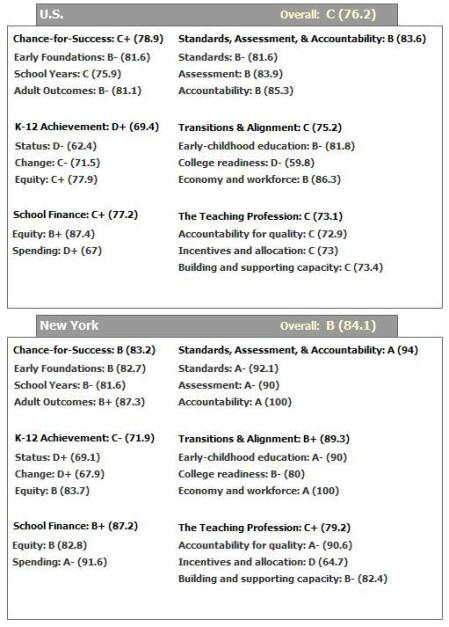
The research center has chosen to split the survey into two parts, each is conducted every other year. This year’s survey focused on:
-
Chance for Success
-
Transitions and Alignment
-
Determines “how well the states smooth the transition through the educational pipeline, including early-childhood education, college readiness, and the economy and workforce”
-
School funding and finance equity
The results for the other three areas listed above (The teaching profession, K-12 Achievement, and Assessment & Accountability) are supported by research carried out in previous years.
How do these scores influence your teaching practices, and to what degree do they reflect the policies in your school? We would love to hear how this report card compares with your experiences.
 Leave a Comment » |
Leave a Comment » |  Community, Finger Lakes STEM Hub, Research, Teacher Resources | Tagged: accountability, Chance -for- Success, Education Week, School Finance, State Report Cards, Transitions & Alignment |
Community, Finger Lakes STEM Hub, Research, Teacher Resources | Tagged: accountability, Chance -for- Success, Education Week, School Finance, State Report Cards, Transitions & Alignment |  Permalink
Permalink
 Posted by aschlag9
Posted by aschlag9
January 18, 2009

Are you interested in plant life?
Create one to five videos related to plants and upload it to YouTube following the contest’s instructions. You might be able to win $$$$.
Deadline for entering the contest is March 1, 2009. Anyone is eligible to participate.
For more information visit the ChloroFilms website.
 Leave a Comment » |
Leave a Comment » |  Finger Lakes STEM Hub |
Finger Lakes STEM Hub |  Permalink
Permalink
 Posted by jaschiram
Posted by jaschiram
January 16, 2009
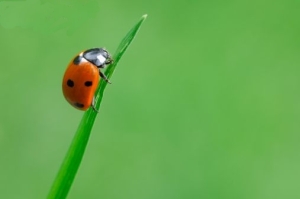
Scientists from Cornell University are asking for your help in tracking ladybug populations in the United States. The process is simple; just look for ladybugs, take pictures of those you find, and send your pictures to the scientists at Cornell University.
Over the last 20 years several ladybug populations have dramatically decreased while others have become more popular. Your pictures will help scientists better understand the changing numbers of each species and the effects one has on another. Together, pictures and facts will begin to tell the story of ladybugs in the United States.
Visit the Lost Ladybug Project website for more information on this effort, along with a participation guide.
Participating in a national research effort like this is called Citizen Science, and has both personal and community benefits. You are able to learn more about ladybugs, science, and conservation by participating in real scientific studies, and as a partnership between public and professional scientists, you will be a part of one of the world’s largest research team!
 Leave a Comment » |
Leave a Comment » |  Community, Environment, Finger Lakes STEM Hub, Science, Volunteers | Tagged: citizen science, Cornell University, ladybugs, Lost Ladybug Project |
Community, Environment, Finger Lakes STEM Hub, Science, Volunteers | Tagged: citizen science, Cornell University, ladybugs, Lost Ladybug Project |  Permalink
Permalink
 Posted by aschlag9
Posted by aschlag9
January 14, 2009

You might be saying: WHAT?
Yes, based on a Wall Street Journal report, Mathematicians have the best jobs. Based on the report, they have the best job because they work in better conditions that other occupations on the list and have a pretty good median annual income of $94,160.
The jobs in second and third positions, actuary and statistician respectively, are also branches of mathematics. Software Engineer and Computer Systems Analyst, which are in the fifth and sixth positions respectively on the list, are applications of math.
Teachers and Parents: you can use this to encourage your students and children to study for mathematics related professions if they like and are good in math.
Full Article
 Leave a Comment » |
Leave a Comment » |  Finger Lakes STEM Hub, Math, Parent Resources, Student Resources, Teacher Resources | Tagged: actuary, best, career, computer systems analyst, job, mathematician, profession, software engineer, statistician |
Finger Lakes STEM Hub, Math, Parent Resources, Student Resources, Teacher Resources | Tagged: actuary, best, career, computer systems analyst, job, mathematician, profession, software engineer, statistician |  Permalink
Permalink
 Posted by jaschiram
Posted by jaschiram
January 12, 2009

The National Science Teachers Association is sponsoring a networking initiative called “Building a Presence” (BaP). By partnering with NYSED, the electronic network aims to create a state and national network for K-16 teachers of science in order to:
- Share resources about effective science teaching and learning
- Lessen science teacher isolation
- Help science teachers implement state and national science education standards in their schools
- Stimulate professional development opportunities for science teachers
- Provide teachers with resources to help all students learn science
New York State is seeking a point of contact in each school to receive email announcements and to share them with colleagues. If you are a Science teacher interested in joining this effort, or know someone else who is, please contact Nancy Ridenour for further details.
 Leave a Comment » |
Leave a Comment » |  Community, Teacher Resources, Technology |
Community, Teacher Resources, Technology |  Permalink
Permalink
 Posted by aschlag9
Posted by aschlag9
January 8, 2009

This morning, National Public Radio outlined several biological changes overeating may cause in our bodies. Even if guilty of such indulgences, an awareness of them will help curb the pattern instead of prolonging it into the new year. Here is a summary of what Patti Neighmond, NPR corespondent said:
- Overeating interrupts internal clockworks: you may not sleep as well, and are prone to midnight snacking.
- A diet full of sugary foods will send your body mixed signals: an increase in the amount of “hormones and metabolic processes” confuses your body and can result in dramatic changes of blood sugar levels.
- Your stomach may be confused: repeated overeating wares out tissues located at the top of your stomach. These tissues sends a signal to the brain that your stomach is full… tired tissues do not send the message, and consequently, you may not know you are full.
When recovering from holiday celebrations, stop and think of the sciences behind your body: anatomy, biology, chemistry, etc. The intricate connection of individual body systems functions best when fueled with healthy foods and drinks. Celebrate January with a fresh salad! Raise your fork high and celebrate science with each bite!!!
 Leave a Comment » |
Leave a Comment » |  STEM in the News | Tagged: anatomy, biology, diet, health, Holiday Eating, stomach |
STEM in the News | Tagged: anatomy, biology, diet, health, Holiday Eating, stomach |  Permalink
Permalink
 Posted by aschlag9
Posted by aschlag9
 A new National Study, published January 14th, indicates that informal science activities, such as trips to museums and zoos, viewing of television shows, and even discussions between parents and children, have the power to improve students’ learning.
A new National Study, published January 14th, indicates that informal science activities, such as trips to museums and zoos, viewing of television shows, and even discussions between parents and children, have the power to improve students’ learning.


 Posted by aschlag9
Posted by aschlag9 








